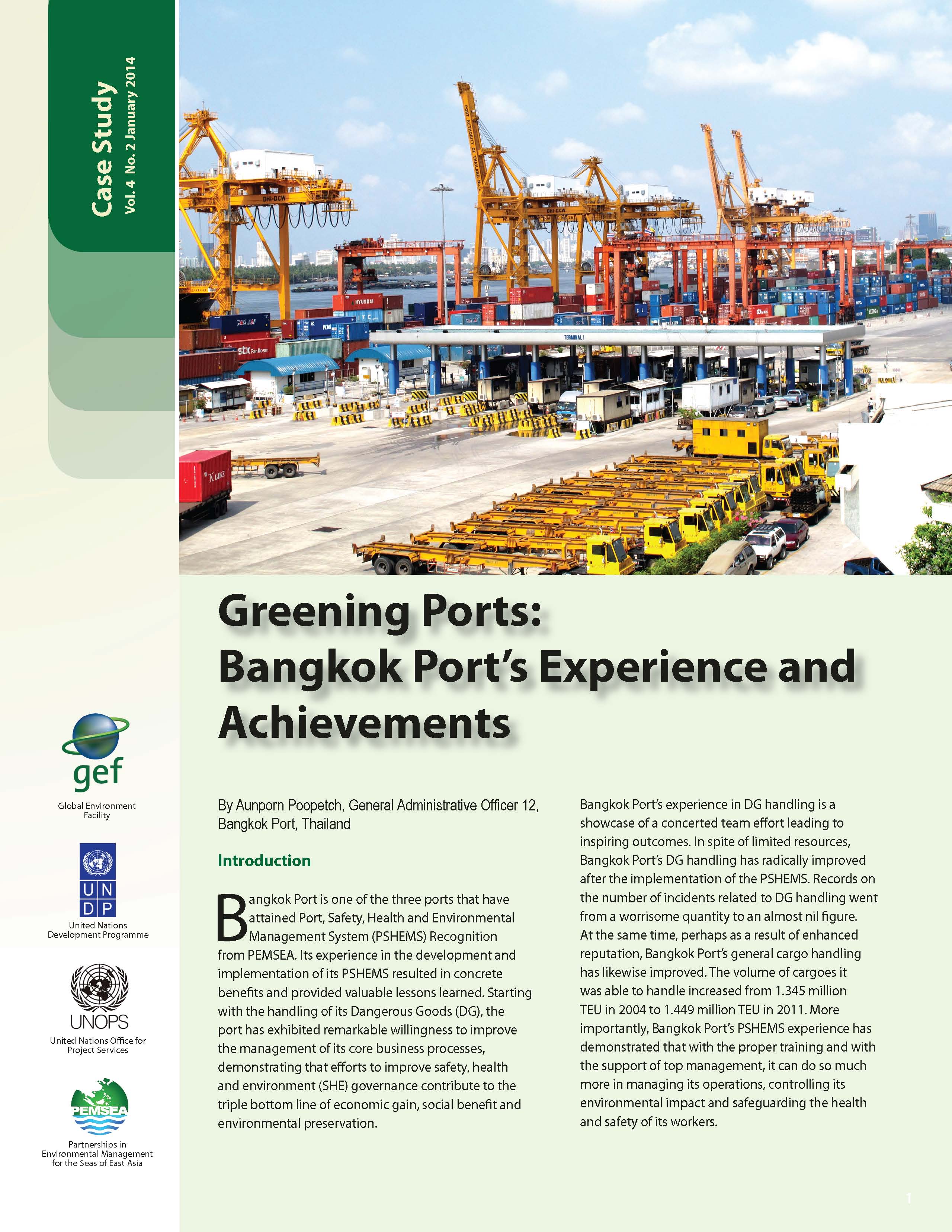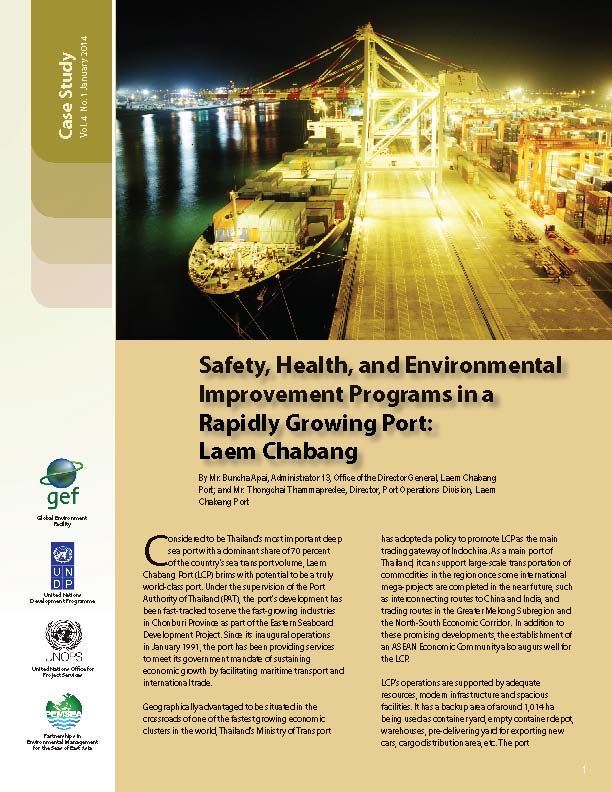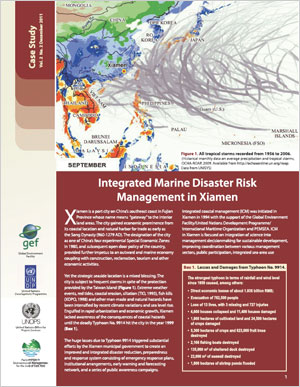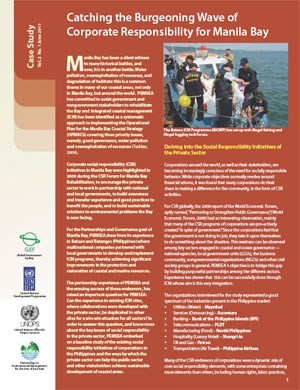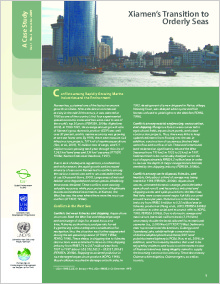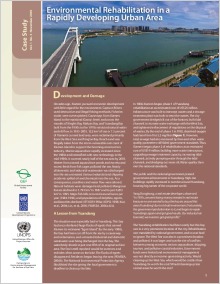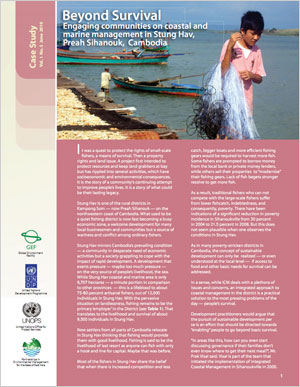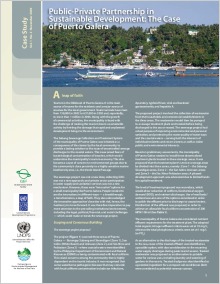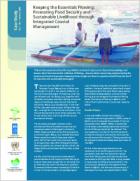
Breadcrumb
-
Greening Ports: Bangkok Port’s Experience and Achievements
Bangkok Port is one of the three ports that have attained Port, Safety, Health and Environmental Management System (PSHEMS) Recognition from PEMSEA. Its experience in the development and implementation of its PSHEMS resulted in concrete benefits and provided valuable lessons learned. Starting with the handling of its Dangerous Goods (DG), the port has exhibited remarkable willingness to improve the management of its core business processes, demonstrating that efforts to improve safety, health and environment (SHE) governance contribute to the triple bottom line of economic gain, social benefit and environmental preservation. The preparation of this case study was supported by the Yeosu Project and Expo 2012 Yeosu Korea, and the Korea International Cooperation Agency (KOICA).
Print version is available for FREE. Pay only for the shipping cost.
-
Safety, Health, and Environmental Improvement Programs in a Rapidly Growing Port: Laem Chabang
Considered to be Thailand's most important deep sea port with a dominant share of 70 percent of the country's sea transport volume, Laem Chabang Port (LCP) brims with potential to be a truly world-class port. Under the supervision of the Port Authority of Thailand (PAT), the port's development has been fast-tracked to serve the fast-growing industries in Chonburi Province as part of the Eastern Seaboard Development Project. Since its inaugural operations in January 1991, the port has been providing services to meet its government mandate of sustaining economic growth by facilitating maritime transport and international trade. The preparation of this case study was supported by the Yeosu Project and Expo 2012 Yeosu Korea, and the Korea International Cooperation Agency (KOICA).
-
Integrated Marine Disaster Risk Management in Xiamen
Xiamen is a port city on China’s southeast coast in Fujian Province whose name means “gateway” to the interior land areas. The city gained economic prominence from its coastal location and natural harbor for trade as early as the Song Dynasty (960-1279 AD). The designation of the city as one of China’s four experimental Special Economic Zones in 1980, and subsequent open door policy of the country, provided further impetus to an outward and marine economy coupling with construction, reclamation, tourism and other economic activities.
Integrated coastal management (ICM) was initiated in Xiamen in 1994 with the support of the Global Environment Facility/United Nations Development Programme/International Maritime Organization and PEMSEA. ICM in Xiamen is focused on integration of science into management decisionmaking for sustainable development, improving coordination between various management sectors, public participation, integrated sea-area use management and law enforcement. Integral to the framework of sustainable development of coastal areas, natural and man-made hazard prevention and management was identified as a key area in coastal profiling and response actions were included in Xiamen Coastal Strategy.
-
Catching the Burgeoning Wave of Corporate Responsibility for Manila Bay
This case study shows that CSR initiatives of the Philippine Corporate Industry are showing signs of life, compared to the preceding decade, and can be incorporated readily into public sector initiatives for the community. The Corporate Governance Watch 2010: Corporate Governance in Asia by the Asian Corporate Governance Association (2010), scores the performance of companies in seven areas: discipline, transparency, independence, accountability, responsibility, fairness, and social responsibility. The study placed the Philippines at the bottom of its list of 11 Asian countries while none of the Asian countries ranked reached the International Best-Practice score of 80 percent.
-
Xiamen's Transition to Orderly Seas
Marine functional zoning reduces use conflicts, improves economic development and sustainability of use, and is thus an operational approach to sustainable development. Xiamen has experienced the benefits of ICM and has adopted it as an approach to sustainable coastal development. Together with the Provincial Government of Fujian and the adjacent cities of Zhangzhou, Longyan, and Quanzhou, Xiamen is now extending the application of ICM to the sustainable development of the Jiulong River Basin area. The local governments in the alliance are coordinating not only the reduction of pollutants, which are the source of 75 percent of Xiamen’s pollution from runoff, but also the planning of transportation, sea use, infrastructure, and tourism development.
-
Environmental Rehabilitation in a Rapidly Developing Urban Area
In the late 1980s, Xiamen aimed to be an "SEZ (Special Economic Zone) which is economically prosperous, and has advanced science and technologies, a beautiful environment, and a high degree of social civilization, and which implements certain policies of a free port" by 2000. In the mid-1990s, Xiamen envisioned a "socialist, modern, international, and scenic port city" by 2000. It has certainly achieved these. Xiamen's incorporation of sustainability considerations in its pursuit of development has delivered results and won it many awards: the 1997 National Model City for Environment Protection, the 2002 International Garden City Award, the 2004 UN Habitat Scroll of Honor Award, the 2005 National Sanitary City Award, and China's 2005 Top Ten Livable Cities Award. Xiamen has not only become more sustainable, its beauty has also attracted immigrants, tourists, and real estate development. A sense of pride in the beauty of their city has also grown in Xiamen's people.
-
Beyond Survival: Engaging Communities on Coastal and Marine Management in Stung Hav, Preah Sihanouk, Cambodia
Following a series of discussions in 2006, a collaborative project with the Fishery Community, the Preah Sihanouk ICM Project and the UNDP GEF Small Grants Programme (SGP) was developed to address, the degradation of resources caused by overextraction of coastal and marine resources and the expansion of infrastructure for large-scale industries. The project was later expanded to cover the rehabilitation of the water supply reservoir, access to clean and safe drinking water and waste management. Over a three-year period, there were three separate but mutually reinforcing SGP projects implemented by the community. This case study documents the experiences of the three projects. It tells of a fishing community’s continuing effort to survive amid the challenges of uneven economic development and a changing climate.
-
Public-Private Partnership in Sustainable Development: The Case of Puerto Galera
Public-Private Partnership is an alternative delivery mechanism, especially when local governments lack the technical capacity, financial resources, managerial capability, and business skills required to deliver sanitation services more efficiently. Technical assistance – from national government and development agencies – can play a crucial role by helping local governments to package bankable projects. Capacity-building activities should focus on developing appropriate skills and attitudes, sharing knowledge of solution options, and enhancing the legal and regulatory system and management structures – key elements in ensuring and sustaining partnerships. The Puerto Galera sewerage project has some success stories to share, but there are still challenges, which if not addressed, could outweigh what have been achieved so far. Foremost concern is financing. Although the local government plans for further reforms in the collection, earmarking, and management of environmental user fee as well as accessing other sources of funds, it is important to take the necessary actions now. Sanitation and environmental investment programs must involve more than just constructing new facilities, but must also include efforts to build institutional capacity, ensure funding for operation and maintenance, and keep momentum behind sanitation and waste management by mobilizing political champions and stakeholders in the various stages of the development and implementation of the project.
-
Keeping the Essentials Flowing: Promoting Food Security and Sustainable Livelihood through Integrated Coastal Management
This case study presents the evolution of the implementation of integrated coastal management (ICM) in Batangas Province and how this holistic management framework has put together the various efforts towards conserving coastal resources and achieving sustainable livelihood for Mang Jury and the fishing communities.
